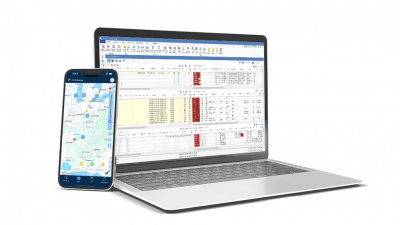Balancing supply and demand in the retail supply chain is no easy task as the past few years have shown. Retailers are still coping with the bullwhip effect of 2022. This happens when small changes in demand at the retail level create larger, more intense changes in demand at all higher-up levels that include wholesale, manufacturer, and even raw material suppliers.
Intense pockets of uncertainty entered retail supply chains when the pandemic created unusually high demand for certain products in 2020 like home exercise equipment. Not knowing how long trends would last caused many retailers to underestimate demand in 2021 and saw their inventories run dry. Most were either understocked or out-of-stock of high-demand items during the 2021 holiday shopping season.
The bullwhip effect happened when many retailers over-rotated and ordered more inventory for this year to be prepared for the 2022 holiday season. Shortages of items, like chips, also made it necessary to place bets on ordering items more than a year in advance, which contributed to costly mistakes by forecasting demand for products with extended lead times.
Paying the Price
Many retailers, big and small, experienced surplus inventories when the economy cooled in 2022. Some were stuck with too much product and were forced to move inventory into secondary markets. Target, for example, shared with investors that it had to mark down unwanted items, cancel orders and take aggressive steps to get rid of extra inventory, all of which would result in a short-term hit to profits. Other retail giants like Walmart, Gap, and Kohl’s also were forced to try to sell extra merchandise that’s been piling up in back rooms and warehouses.
Highs and lows within the retail space are persistent. For shippers, it means that striking a balance between demand (shipment orders) and supply (truck capacity) is a constant juggling act. For nearly all of 2021 and for the first half of 2022, shippers struggled to find truck capacity. Market conditions led shippers to conduct a tremendous amount of mini bids to shore up their contract rates and plug holes in their routing guides.
Previously shippers conducted large annual RFPs to line motor carriers up for contracts. When the slowing economy led to a dip in the freight market, and capacity started to loosen, shippers needed to respond quickly to take advantage of savings.
Demand for goods hauled by trucks has been falling from inflation, cutting into consumers’ budgets. According to the U.S. Bank National Shipments Index, truck freight volumes dropped by 2.6% in the third quarter, returning to Q1 levels. Year-over-year volume came down 4.9%.
The freight market is still growing, though, albeit at a dampened pace. In Q3, the seasonally adjusted freight tonnage index of the American Trucking Association was 2.8% higher compared to Q3 2021. As capacity is loosening up, many shippers are going back to an annual RFP for 2023 but also conducting more activity in the spot market to take advantage of better rates.
Leverage a Shipper TMS to Align Demand with Capacity
A shipper transportation management system (TMS) can help retailers regain control and confidence to successfully ride the supply and demand waves.
PCS Software’s Shipper TMS can help retailers more closely align current and future shipments with capacity by integrating rate data and analytics with the planning process from trusted providers like DAT Freight & Analytics. With a truly connected ecosystem, shippers can feel confident they’re working with the most accurate, most up-to-date information and can ensure their contract rates are aligned with the market.
But it doesn’t stop there. The Shipper TMS also offers functionality to manage other shipping-related processes such as advanced scheduling, fleet management, freight audit and payment, and reporting.
The AI-supported automation in the platform can optimize and continuously refine critical transportation logistics processes so that shippers within the retail space can achieve improved efficiency and greater visibility throughout their operations. Although the past few years have been challenging, retailers that use a modern Shipper TMS can adapt quickly to changes by making smarter, faster, and more confident decisions.
If you’re interested in learning more about how PCS Software’s next-generation TMS can support the highs and lows of retail supply chains, Request a demo



